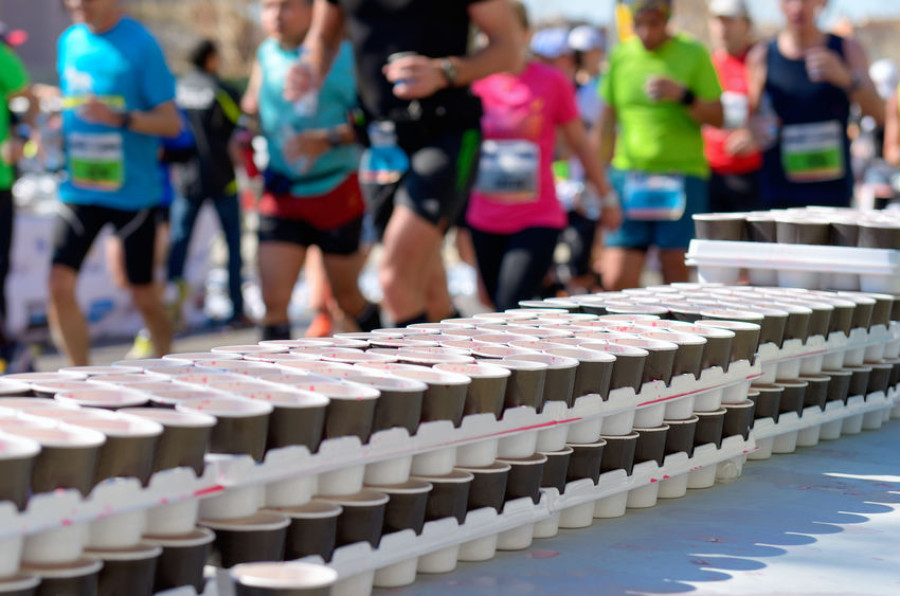For those of you that have signed up to a long-distance event like a marathon you would have undoubtedly heard of “hitting the dreaded wall”. I myself am doing a 100 mile bike event in June of this year and as I increase my training volume, I am now having to be much more mindful about my fuelling strategy to optimise performance.
In this article I look at what that wall is, why you can hit it and what you can do to avoid hitting it.
What is the wall?
The wall is a phase used to describe the sensation you feel when you have depleted your main source of energy for more intense physical activity. This can leave you feeling like you are running through glue, can be psychologically very tough to cope with as well as physically.
Why do you hit it?
Hitting the wall is essentially when you deplete your stores of carbohydrate, also known as glycogen. We can store around 500-800g of carbohydrate stored as glycogen in the muscles and liver.
When are you most likely to hit it?
You typically have enough glycogen for around 2-3 hours of intense exercise, this will vary from one person to another for a whole host of reasons based upon intensity level, diet and training strategies prior to the event, how loaded your glycogen stores are before the event and of course if you have any fuelling strategies during the event that helps to top them up.
Do you only hit the wall when doing a marathon?
Hitting the wall can occur in other activities as well, in particular longer duration events where there is adequate time and intensity to deplete glycogen fully. Having said that if one is on a lower carbohydrate diet or even a ketogenic style diet, levels will of course already be depleted or will deplete quickly. Therefore, any higher intensity exercise will feel more challenging than normal.
I have even seen depleted individuals through carbohydrate restriction find it challenging to walk upstairs without feeling like they are “hitting the wall”.
Does everyone hit the wall?
Not everyone will hit the wall. Well trained individuals or those that have purposely trained to be more fat adapted (using fats more to help fuel performance) may utilise less glycogen/carbohydrate for performance. In reality the fitter we are and the faster we want to go, we continue to push the intensity, as a result glycogen depletion is still a very real thing even for the most highly trained individuals, hence in my opinion peak performance determined by the ability to utilise carbs and fats effectively.
How do you prepare for a wall-free race?
There are a number of things that you can do. First of all, do the miles and get the training in so that you have a good base fitness and you are able to sit at a base lower intensity to help preserve glycogen and utilise fats as fuel. The more unfit you are for the event, the harder you will typically be working and the quicker you deplete glycogen.
Second is to taper off training in the run up to the marathon, continue to eat as you would have while training, this helps to ensure your glycogen stores are as they should be. Sometimes you might have to emphasise higher carb meals in the run up to an event, however, extremely high carb loading the night before is usually unnecessary and results in digestive upset, a poor night’s sleep and feeling sluggish the next day.
A good balanced breakfast in the morning including some complex carbs like oats, bread, pancakes, rice etc, maybe some more simple carbs in the form of fruits, fruit juice to replenish some of the depletion of liver glycogen that would have occurred overnight while sleeping. Mix that with some good quality protein and some healthy fats. So, things like a few nuts, eggs, maybe a protein powder etc can be useful although will slow the rate of gastric emptying and therefore will take a little longer to fully digest that meal, it can however help to stabilise glucose variability in those prone to reactive hypoglycaemia (low glucose) following high carb meals.
The meal should be consumed a good 2.5-4 hours before the start of the race to give enough time for it to be digested and not impact you when you start running. I’d recommend a good 100g+ of carbohydrate in that first meal, so long as there’s sufficient time before the start of the event. This should be a meal you have already tried in the run up to the event before a long run, so you know how you are going to respond.
Third is to plan and get use to what your fuel strategy is going to be on the day. The use of carbohydrates during the race can help to replenish muscle glycogen/provide immediate glucose for energy production.
It is crucial that you get used to what you use on the day, whether it’s a liquid based carb and electrolyte supplement, gel, gummy sweets etc. These foods may upset the stomach if you suddenly start using them. As much as you train your muscles you need to train your gut to be able to tolerate the intra-marathon/training fuel you are using, otherwise you may have and embarrassing situation or cramping and it can ruin your race and put to waste all the time and training you put into the event.
What can you do while running to stop you hitting the wall?
As a general rule of thumb around 30-60g of carbohydrate can be consumed per hour. The source should be easy to digest as the digestive system is not in any state to process more complex meals high in proteins, fibre etc, this is why simply sugars with electrolytes can effective without causing digestive upset.
I personally prefer a mix of gels because they are easy to carry on me when I am doing long distance events. I may also intermix some real food like a banana so I am not completely reliant upon gels and if I have planned for a lower intensity period in my race/training session I may even carry on me a small homemade flapjack or cake of some kind. If you are relying on what is on offer on the course, then find out what it is and when you get it. Again, try to use this in preparation for the event so that you know you tolerate it well.
Also be aware of your strategy when running. Don’t go off too hard or at a pace that you are not used to for that distance. Sometimes the adrenaline of the event can help, but other times it can drive us to expend a lot more energy at the front end of the race resulting in a negative impact on performance later on in the event.
What do you do if you do hit the wall mid-race?
I’d recommend taking your pace down for a bit so that you lower the intensity. This can help to reduce the heart rate but also helps the body to utilise more fats as fuel. Even the leanest of athletes have enough fats stored to run multiple marathons back to back so you will not run out of available fats, you just have to be able to access it.
Try and get a carbohydrate and electrolyte drink/gel. If you have not used these in the run up to the event then, reduce your intensity, perhaps just walk for a bit and take on small amounts of the carbohydrate at a time to drip feed in glucose without hopefully upsetting the stomach and send you running or stumbling to the toilet.
I hope these tips help you in your endurance events and training. If you are looking for more individualised support with a Sports Nutritionist, then feel free to fill out the contact form below.
Contact Steve Grant Health
To learn more out how Steve Grant Health can assist you on your journey, please fill out the enquiry form below.
Please note that depending on your specific circumstances and goals, Steve may recommend that you work with one of the specialist practitioners within his network of trusted professionals.
If you have been referred by a clinician, please complete the form and ensure that you state who has referred you or have your practitioner email Steve direct to make a referral that way.
Click the button below to open the client enquiry form:
[widgetkit id=”643″]



